I hope April is going smoovely for you. Things are great here! Today I watered my gardens for the first time and discovered tulips and lilies emerging! Since this is the first spring in our house I didn't know what to expect, other than the 80 bulbs I planted in the fall.
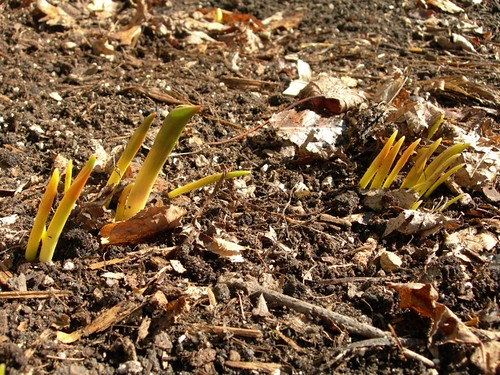

Last weekend I was so excited to host my cousins Miss Lippy and Big W from Wisconsin - their blog links are visible on the right of my screen. It is always fun to have visitors, and these sisters are awesome in general. Not only did we feast at Brasa and on pizza from Pizza Luce, but also conquered the MOA and IKEA, the latter with Maven herself!
Miss Lippy and Big W shown here after the big shopping day, bonding with Stella:

Apparently Big W has a former colleague who was really into having pet rodents, including a South American degu. What?!
Have you heard of degus?! Let us learn together.
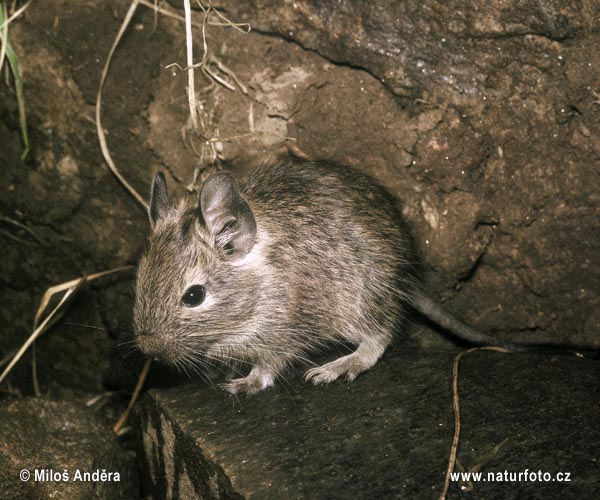
Fer cute!
Degus, or Octagon degus, is a cousin of the guinea pig, capybara and chinchilla. Tonight I learned the above critters are members of the Caviomorph infraorder of Rodentia. These guys have different skull structures than other rodents, and include some Rodents Of Unusual Size in Africa too. Not to forget our own North American dude, the porcupine!
Side Note: I am totally fascinated by how animals evolved throughout the planet, and the role of plate tectonics in how these rodents moved from Asia to Africa and to South America.
There are four species of degus with populations in Chile and Argentina, including a distinct variety living solely on Mocha Island off the central coast of Chile. (Field trip necessary.)
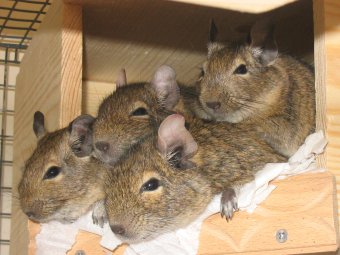
Degus are four to seven inches long and have furry-tipped tails. These social rodents are herbivores and live in complex social groups. Together, they dig extensive tunnels. Along with plants and cacti, degus eat nuts and roots. In rough times they supplement their diet by eating their own poo, (coprophagy) like rabbits.
Side Note: My dog prefers to eat cat poo and other, mystery poop she can quickly snatch off the ground before I stop her.
Degus have a complicated vocabulary of squeaks and grunts with which to communicate, along with urine scent marking. Unlike some other rodents, degus see well, probably because they are active during the day. A degu superpower is the fact they can see on the ultraviolet spectrum, and their white belly fur and urine glows when viewed through an ultraviolet lens!
Some white belly fur:
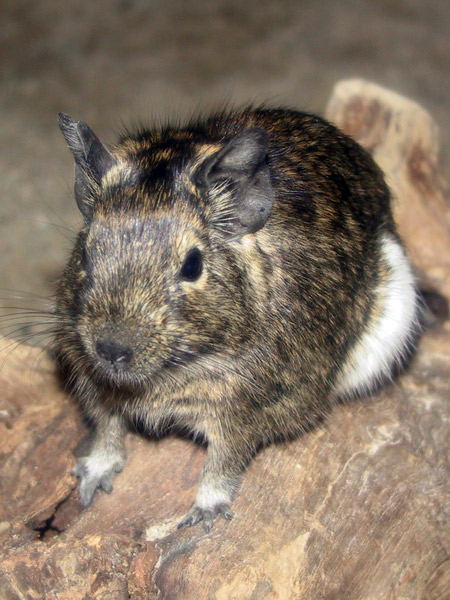
Like most rodents, degus reproduce on the regular. The females even nest together and nurse each other's babies. Unlike other beady-eyed critters, degus have a long gestation period of 90 days. This allows the degu pups to be born with fur, vision and hearing ready to go.
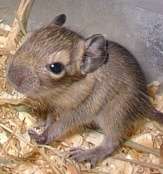
Degus are also really intelligent, probably because of their social systems. Scientists have taught them to use tools in captivity. They also become easily diabetic when fed too much fruit, and are used in laboratory research to study the disease.
In fact, it was through the lab that degus first became house pets! They are easily trainable, intelligent and affectionate pets, "grooming" their owners by stroking them with their teeth! It is also convenient that they are active during the day. Because of their burrowing habits, however, a degu can easily chew through the plastic bottom of most guinea pig cages, so more rugged housing is necessary. Degus can live eight to thirteen years in captivity.
OMG I totally want one!
Fuzzy fuzzy degus,
Wendell!

3 comments:
I want one too!!!
Just got 3 goos and they are really sweet. They were handled since birth and really cool to own, although they do require large cages with multi levels and lots of interaction on a daily basis. Definately requires a big commitment.
Give. Me. All. Your. DEGUS!!! <3
Post a Comment